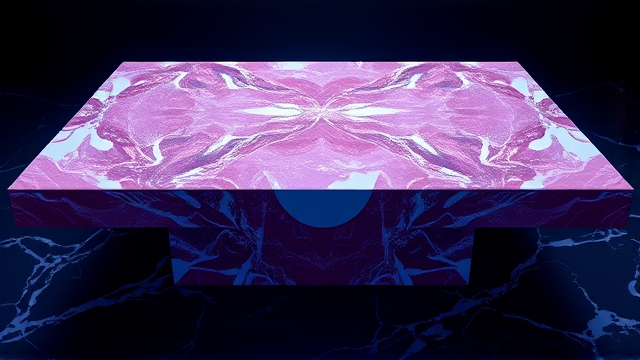Christie's New Auction Model Succeeds in Design Sale
The venerable halls of Christie's, a temple to art and antiquity where whispers of gavels have consecrated the exchange of cultural totems for generations, recently staged a quiet revolution in its very liturgy, and the centerpiece of this ceremonial shift was a magnificent 19th-century Incarnat Turquin marble dining table, a slab of geological history that hammered for a staggering four times its estimate. This wasn't merely a sale; it was a meticulously directed production, an in-studio auction that felt more like a tightly framed cinematic close-up than the traditional, sprawling theater of a main salesroom, a deliberate pivot in choreography for the house's Jonathan Burden design sale that signals a profound and calculated evolution in how high-value objects are presented to a digitally-native, attention-economy-driven clientele.Imagine the scene: the camera lingers not on a sea of anonymous paddles but on the intricate, rosy veins of the Turquin marble, a stone quarried from the Belgian subsoil and beloved by Napoleon III for its fleshy, incarnadine hue, its surface a silent narrative of imperial opulence and Gilded Age American ambition, where such tables presided over dinners that shaped financial and political dynasties. This specific object, a monumental testament to neoclassical revivalism, became the protagonist in Christie's new narrative model, a model that eschews the frenetic energy of a live auction for the curated intimacy of a studio set, where lighting, camera angles, and expert commentary are deployed with the precision of a film director, transforming the auction from a transactional event into an immersive storytelling session.The success of this table—its dramatic financial crescendo—isn't just a data point; it's a review in three acts, a critical analysis of a market hungry for connoisseurship and context. The first act is one of provenance and materiality, where the auction house's specialists performed as scholarly narrators, unpacking the biography of the marble itself, its journey from a quarry in Wallonia to the atelier of a master craftsman, drawing parallels to the cinematic symbolism of a grand prop in a period drama, an object that carries the weight of imagined histories and real-world artistry.The second act is the dramatic tension of the bid, the psychological warfare conducted not in a room but across fiber-optic cables, a global audience of collectors participating in a performance where the stakes are both financial and symbolic, a testament to how the pandemic-era pivot to digital has permanently altered the stagecraft of luxury sales, forcing institutions like Christie's to become content creators as much as auctioneers. And the final act is the denouement, the hammer price that resonates beyond the sale room, a powerful review score for this new auction format itself, proving that for certain categories—particularly design, where the tactile and aesthetic qualities benefit from such focused scrutiny—this model can enhance perceived value and competitive fervor.The broader context here is a market in flux, where the traditional white-glove auction can feel anachronistic to a new generation of buyers weaned on the sleek, direct-to-consumer storytelling of brands like Perigot or The Invisible Collection. Christie's, in this bold directorial debut, has effectively critiqued its own past methods, offering a more nuanced, deeply-researched, and visually compelling alternative that frames each lot not as a mere lot, but as a character with a backstory, its value amplified by narrative depth.The consequences are manifold; we may see this intimate, studio-based approach become the gold standard for single-owner collections or niche categories, creating a new genre of auctioneering that sits alongside the blockbuster evening sales, much like an auteur's independent film exists alongside a summer tentpole franchise. Expert commentary from market analysts suggests this is less a fleeting experiment and more a fundamental rewrite of the script, a necessary adaptation in an era where attention is the ultimate currency. The success of the Incarnat Turquin table is the plot twist that confirms the new narrative's power, a standing ovation for a performance that blended scholarly rigor with cinematic flair, ensuring that the story of the object, and the house that sells it, continues to captivate for generations to come.
Latest News
In a move that echoes the delicate diplomatic choreography more commonly seen in United Nations assemblies than in song contests, the European Broadcasting
2 hours ago0 comments
The venerable halls of Christie's, a temple to art and antiquity where whispers of gavels have consecrated the exchange of cultural totems for generations,
3 hours ago0 comments
The needle hasn't just moved; it has been ripped from the groove and cast in solid gold.
5 hours ago0 comments
In the grand, often predictable theater of pop music releases, where artists frequently trade artistic ambition for algorithmic certainty, Louis Tomlinson’s
5 hours ago0 comments
Let’s get one thing straight right off the bat, darlings—no, these gummies do not actually contain cornbread, which, let’s be honest, would be a truly wild
5 hours ago0 comments
In a move that sent the gossip-sphere into a full-blown frenzy, Georgina Badell recently took to her social media channels, not to address the swirling rumors
5 hours ago2 comments
The 2025 SONA Warrior Awards, held on October 12th, was less a standard industry pat-on-the-back and more a masterfully orchestrated symphony of raw, genuine
6 hours ago0 comments
Alright, squad, strap in because the Fortnite rumor mill just went into overdrive and this is the kind of leak that has the entire community absolutely buzzing.
6 hours ago0 comments
It’s quiet here...Start the conversation by leaving the first comment.
